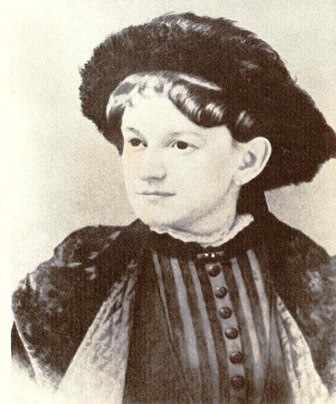
A philanthropic couple from New England who prospered from America’s Industrial Revolution extended a helping hand to the University of Maryland Eastern in its early days when the school was known as Princess Anne Academy.
Harriet and Dexter Smith of Springfield, Mass. made a donation that was used at what was then a prep school for Blacks under the superivision of the Methodist Episcopal Church. The Smiths’ gift was given in memory of their deceased daughter, Eliza.
Baltimore’s Morgan College’s 1893 catalog noting that a new dormitory would be ready for occupancy at its upstart branch campus on Maryland’s lower Eastern Shore by the summer of that year.
“This will furnish ample and beautiful accommodations for the girl students … and will perpetuate the grateful memory of Eliza F. Smith for generations to come,” reads a message attributed to F.J. Wagner, Morgan’s president.1
In November 1893, a Westminster, Md. newspaper reported on the dedication of “Eliza F. Smith Dormitory,” and credited “Dexter Smith and wife (of) Springfield, Mass.” as benefactors.
“The progress of this institution,” the article reads, “has been marked and substantial from the day it was founded, in the fall of 1886.”2

The dormitory stood approximately 20 yards from “Olney,” an early American manor house that served as the academy’s cornerstone in its early years. According to campus lore, a portrait of the Smiths’ only child hung inside.
As enrollment grew, an annex to Smith hall was built around 1915. The newly enlarged housing complex often times was called “DelCon” in deference to the Methodist Episcopal Church’s Delaware Conference.
By the mid-20th century, stick-built residence halls were being replaced by brick counterparts. On Sunday morning, Feb. 1, 1959, an estimated 375 local firefighters — many of them volunteers — assembled on campus for a training exercise; the Eliza Smith – DelCon complex was the object of a controlled-burning.
A brief article and photos appeared in the following afternoon’s newspaper published in nearby Salisbury, which reported that “it took over five hours for the complete destruction of the building.”3
The demolition also was memorialized by education professor T. Waldo Kiah, who penned a bittersweet essay for the 1959 yearbook in which he, too, refers to the generosity of “Mr. Dexter Smith of Springfield, Massachusetts.”4
A family plot in a Springfield cemetery is the final resting place for Eliza Foster Smith, who died May 4, 1891 – two weeks shy of her 30th birthday. Her parents are buried nearby. Eliza’s father Dexter, an inventor who held at least four patents, did not live to see his memorial gift fulfill its intent; he died Dec. 4, 1892 at age 58.5

Also interred in that same cemetery is Eliza’s paternal grandfather, Horace Smith, whose philanthropy supported the growth of Methodism in Springfield.6
The 1880 federal census shows Harriet, Dexter and Eliza Smith lived in Springfield’s “Ward 6.” That same document lists Dexter Smith’s occupation as “gunsmith,” a profession he shared with his father, the co-founder of firearms’ manufacturer Smith & Wesson headquartered in Springfield, Mass. {Horace Smith sold his interest in the business in 1874 to partner Daniel Wesson and retired.}
A widower with no direct heirs, Horace Smith died in January 1893 six weeks after his son, Dexter. Executors of the elder Smith’s estate dispersed donations to his favorite charities and causes, which included the local library in Springfield, the Y.M.C.A. and a hospital.
Also among Horace Smith’s beneficiaries were Tuskegee College in Alabama, which received $10,000, as well as “the school conducted by L.W. Brooks” in Prince William County, Va., which received $3,000. Both were founded to educate African-Americans.7
1 – Morgan College catalog, 1893-94, pg. 6
2 – Nov. 4, 1893, Democratic Advocate newspaper, Westminster, Md.
3 – Feb. 2, 1959, School Building Burned Intentionally, The Salisbury Times, pg. 1
4 – T. Waldo Kiah essay, 1959 Hawk yearbook, pg. 78
5 – Springfield, Mass., city cemetery online registry with headstone images.
6 – The King’s Handbook of Springfield, Mass. pg. 180
7 – Jan.19, 1893, Half a Million for Charity; the Bequests of Horace Smith, The Springfield Daily Republican

